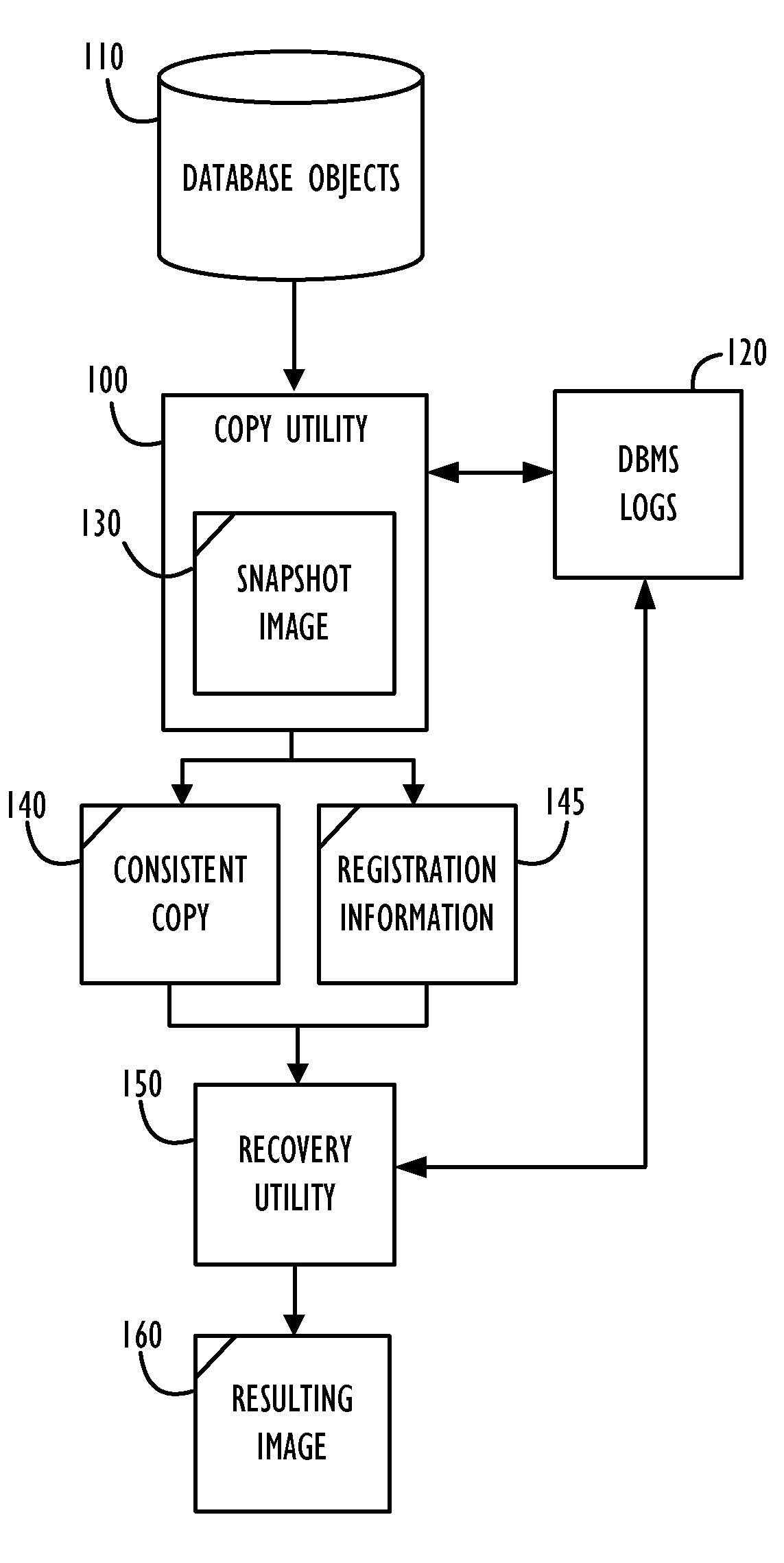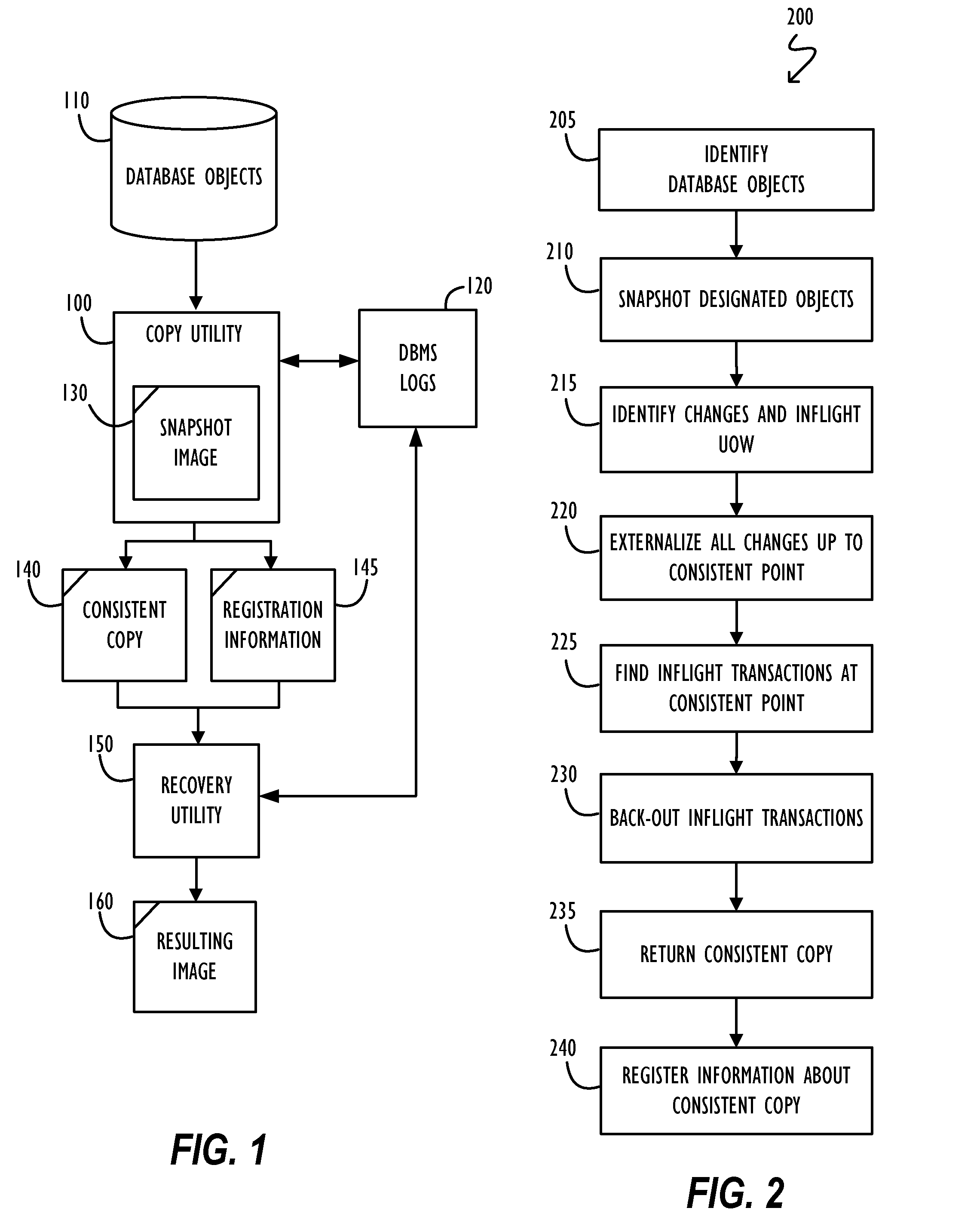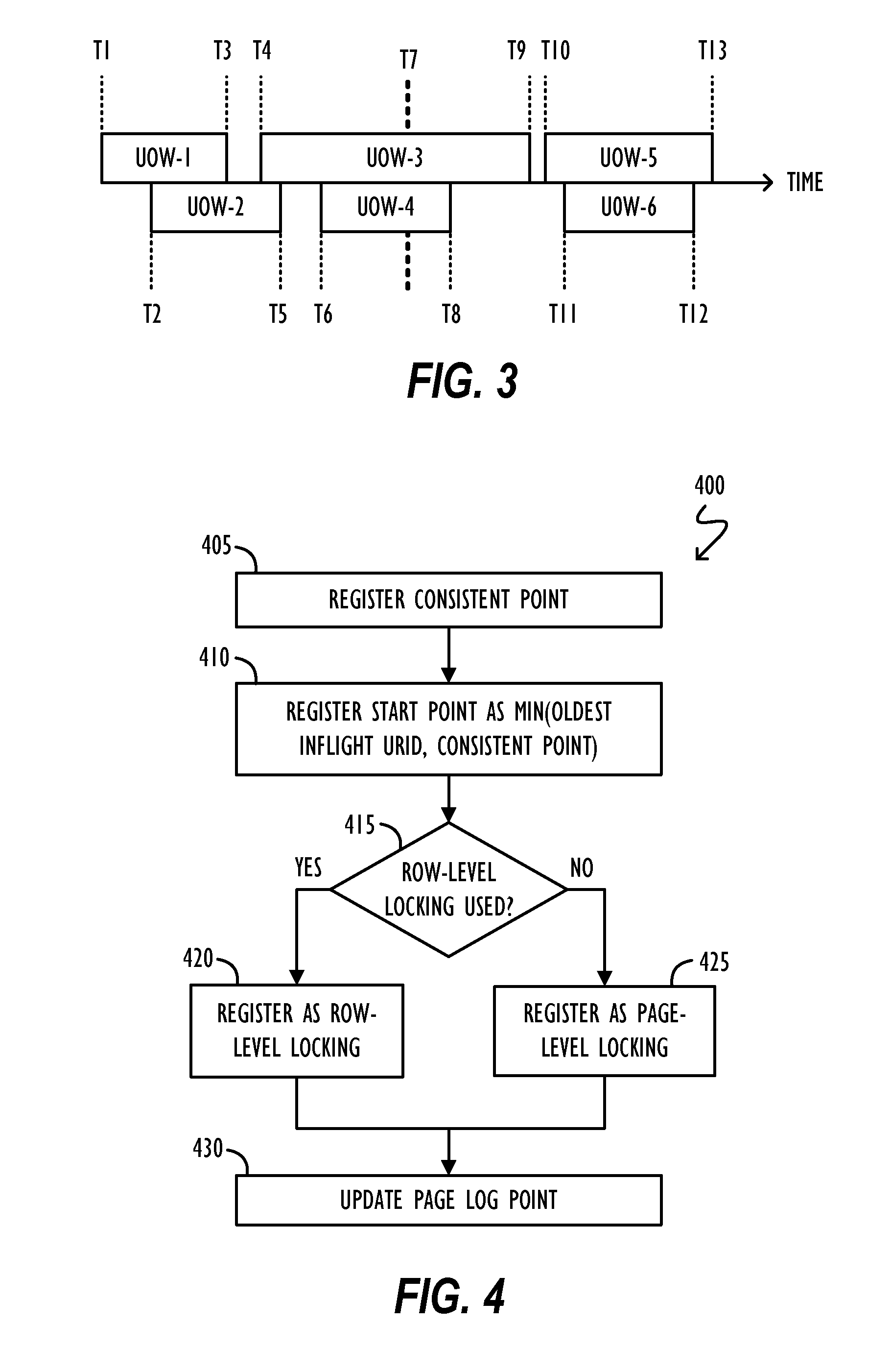Database Recovery Using Logs Applied to Consistent Copies
a technology of consistent copy and recovery, applied in the field of database systems, can solve the problems of preventing users from updating database objects, significant drawbacks for large or complex databases, and/or those databases that experience large update volumes, and achieve the effect of effective recovery and application of log records
- Summary
- Abstract
- Description
- Claims
- Application Information
AI Technical Summary
Benefits of technology
Problems solved by technology
Method used
Image
Examples
Embodiment Construction
[0014]Techniques (including methods and devices) are described to provide database recovery using a point-in-time consistent copy of one or more database objects and applying log records to that copy to create a resulting image of the database object(s) up to the current time or an arbitrary, but specified, point-in-time after the consistent copy was made. The following embodiments, described in terms of DB2® database copy and recovery operations, are illustrative only and are not to be considered limiting in any respect.
[0015]Referring to FIG. 1, a copy and recovery process according to one embodiment is illustrated. In the process, a copy utility 100 makes a snapshot image 130 of target database objects 110. Using DBMS logs 120 and other techniques discussed below, the copy utility 100 makes the snapshot image physically and transactionally consistent to a point-in-time (i.e., a “consistent point”) to produce a consistent copy 140. In one embodiment, operations of the copy utility...
PUM
 Login to View More
Login to View More Abstract
Description
Claims
Application Information
 Login to View More
Login to View More - R&D
- Intellectual Property
- Life Sciences
- Materials
- Tech Scout
- Unparalleled Data Quality
- Higher Quality Content
- 60% Fewer Hallucinations
Browse by: Latest US Patents, China's latest patents, Technical Efficacy Thesaurus, Application Domain, Technology Topic, Popular Technical Reports.
© 2025 PatSnap. All rights reserved.Legal|Privacy policy|Modern Slavery Act Transparency Statement|Sitemap|About US| Contact US: help@patsnap.com



